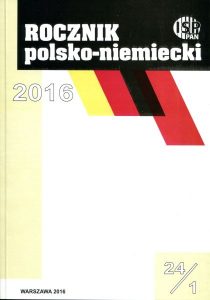Wprowadzanie podwójnego nazewnictwa na tablicach miejscowości i urzędów oraz języka pomocniczego w gminach na Górnym Śląsku a ich społeczne postrzeganie
The Introduction of Double Names on Village and Office Signs and the Auxiliary Language in the Municipalities of Upper Silesia and their Public Perception
Author(s): Paweł PopielińskiSubject(s): Politics / Political Sciences, Politics, Public Administration
Published by: Instytut Studiów Politycznych PAN
Keywords: double nomenclature; the German minority; Upper Silesia; an auxiliary language; the Act on National and Ethnic Minorities and Regional Language; tolerance; social acceptance
Summary/Abstract: The law on National and Ethnic Minorities and Regional Language of 2005 regulates not only matters related to the preservation and development of the cultural identity of national and ethnic minorities in Poland, but also the problem of bilingualism, auxiliary language and bilingual names. It allows minorities living in Poland to express and emphasize their presence, among other things, by placing names in the minority language on signs next to the official names of places and physiographic objects. Polish society was most concerned about the introduction of dual place names and the use of minority languages as auxiliary languages in offices in some municipalities in Poland, especially in Upper Silesia. Issues of cultural cultivation and the use of education aroused far fewer objections and did not cause doubts.This article shows not only the origins and the role of the introduction of bilingual village and office signs and the German language as the auxiliary language in offices in Upper Silesian municipalities (in the provinces of Opole and Silesia), but also the perception of this phenomenon by both the German minority and the majority society. This paper also presents the legal and sociological aspects of the discussed issues.
Journal: Rocznik Polsko-Niemiecki / Deutsch-Polnisches Jahrbuch
- Issue Year: 1/2016
- Issue No: 24
- Page Range: 122-144
- Page Count: 25
- Language: Polish

